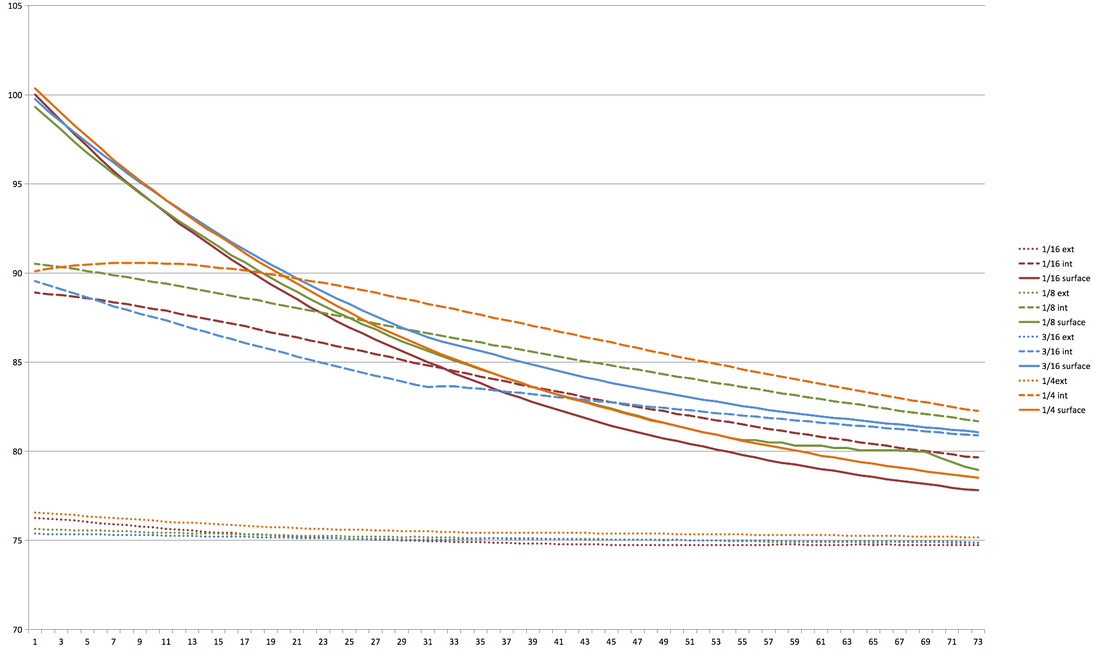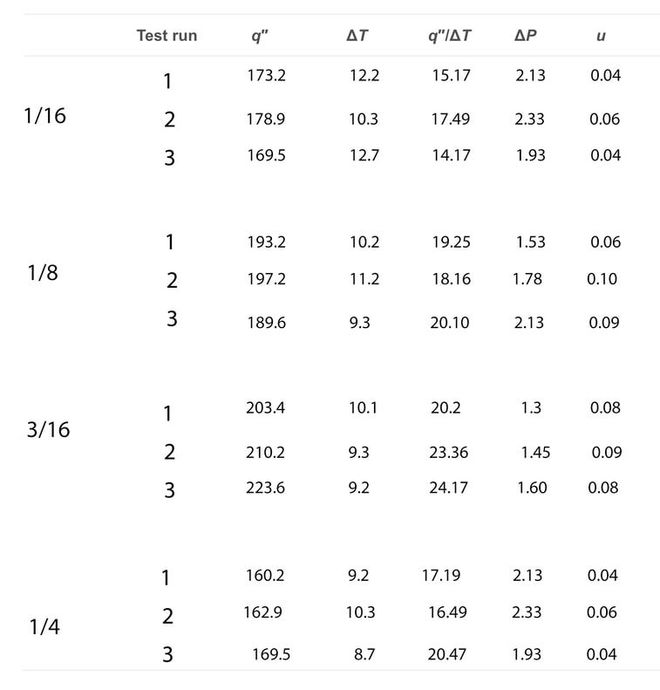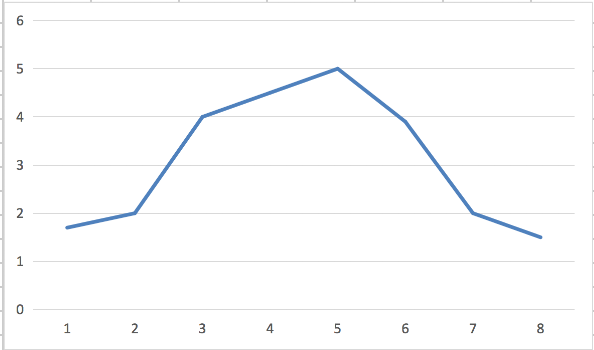Calculation
q″ . heat flux [W m−2]
ΔP . pressure difference [Pa]
Be . Bejan number
μ dynamic viscosity [kg s−1 m−1]
k . thermal conductivity [W m−1 K−1]
a . air
ae . air, exterior
ai . air, interior
ΔP . pressure difference [Pa]
Be . Bejan number
μ dynamic viscosity [kg s−1 m−1]
k . thermal conductivity [W m−1 K−1]
a . air
ae . air, exterior
ai . air, interior
Results
Graph: Temperature (。F) changing trend with time (s) going
Heat Flux (q'')
According to the temperature changing graph, the 3/16 concrete wall hold the heat best and the 1/16 has the worst capacity of keeping heat. However, heat exchanging is another thing, where heat flux (q'') describes the heat-transfer capacity. In detail to say, the amount of air and differential pressure also affect the heat exchanging process. The 1/16 wall keeps the wind from going through in some ways, which has a negative effect on heat transfer. The 1/4 wall has overlarge holes, which let the heat losing easily.
So d=3/16 is the best size of holes for heat exchanging among 1/16, 1/8, 3/16 and 1/4 (worst).
So d=3/16 is the best size of holes for heat exchanging among 1/16, 1/8, 3/16 and 1/4 (worst).
Next-step Prediction



